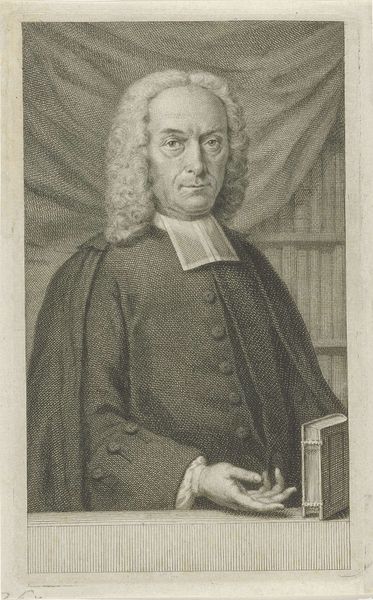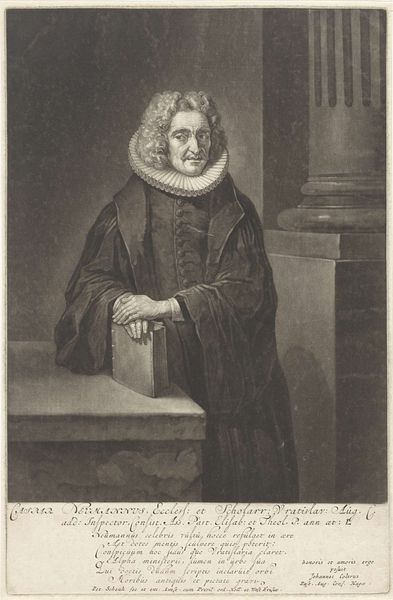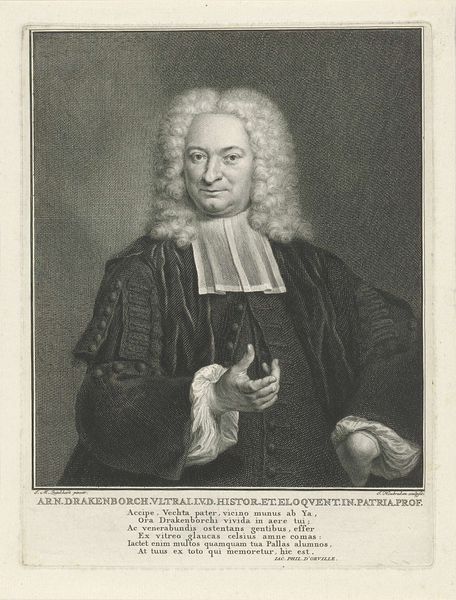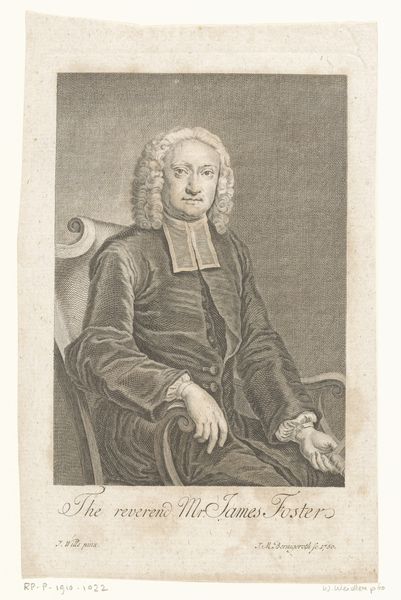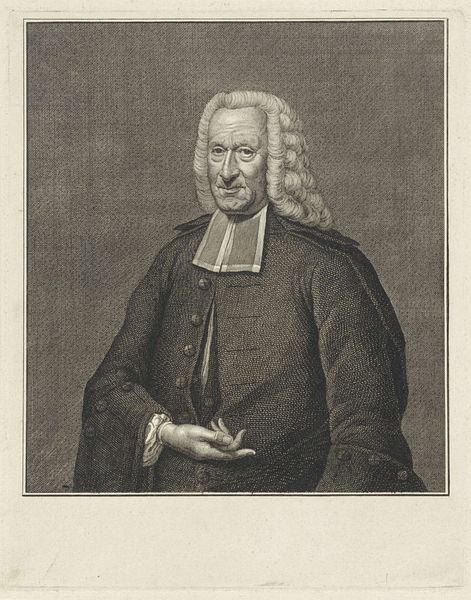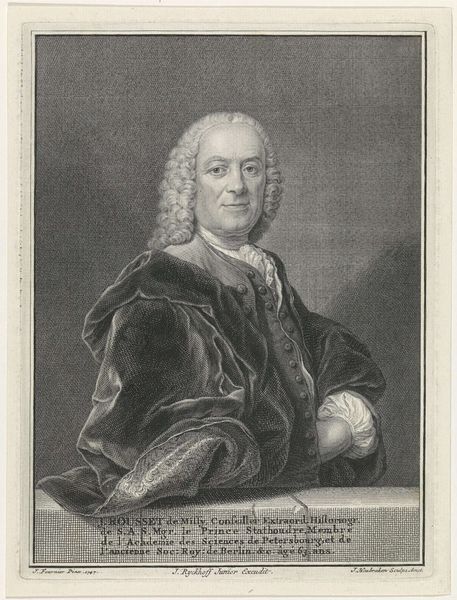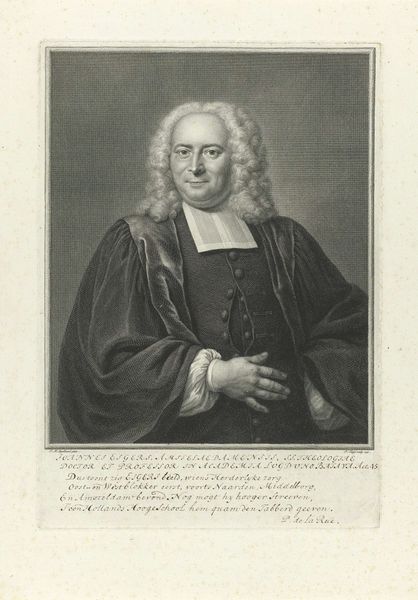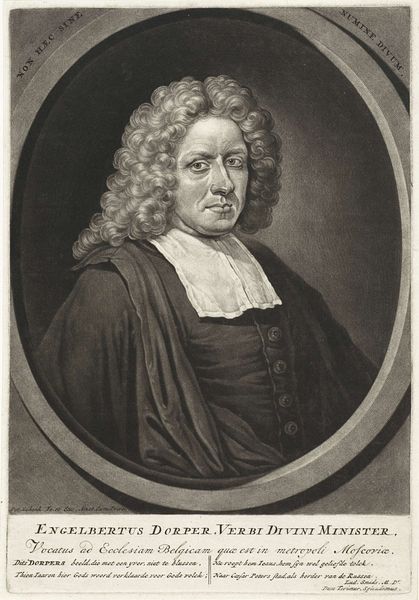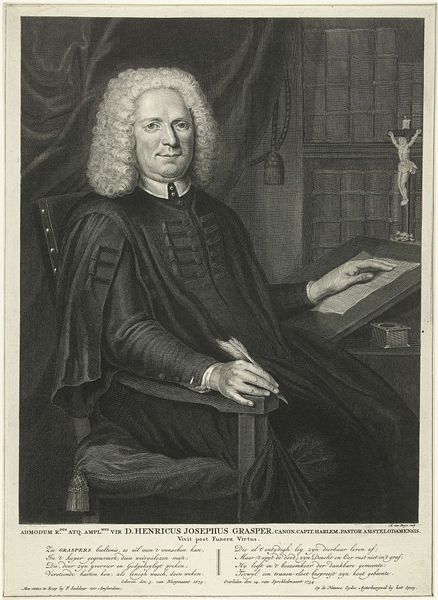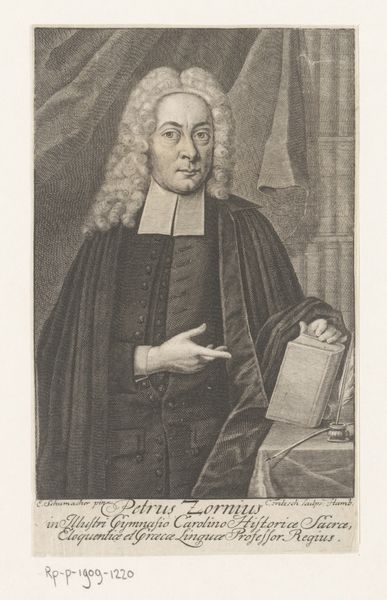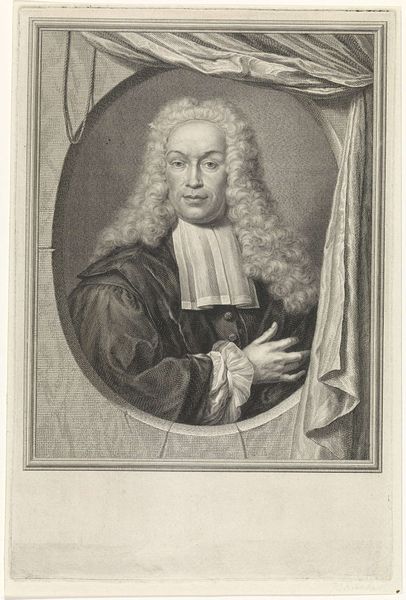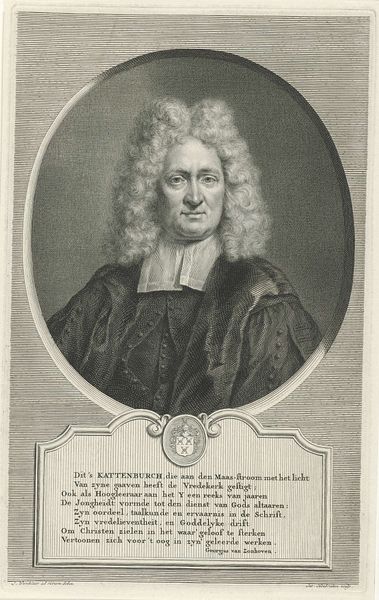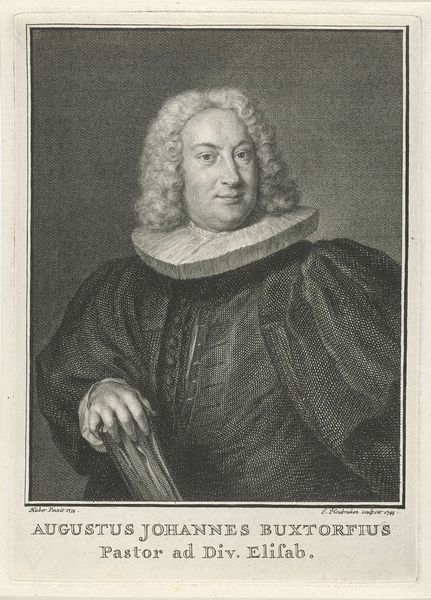
print, engraving
#
portrait
#
baroque
#
portrait image
# print
#
history-painting
#
academic-art
#
engraving
#
portrait art
Dimensions: height 352 mm, width 249 mm
Copyright: Rijks Museum: Open Domain
Editor: This is a print titled "Portret van James Foster," made sometime between 1748 and 1764 by Pieter van Bleeck. It's a very formal portrait; he looks important. What should we be looking at here? Curator: Well, as a materialist, my focus is drawn to the printmaking process itself. Consider the labor involved in creating an engraving like this. The meticulous work of carving those fine lines into the metal plate, the pressure exerted to transfer the image onto paper. Each stage is a physical process. Editor: That's fascinating. It does seem incredibly detailed. Almost photographic, in a way. Curator: Exactly. And that's where the social context becomes important. Prints like these were a way to disseminate images and ideas more broadly. Think about the economics of portraiture at the time. Oil paintings were exclusive commissions for the wealthy. But an engraved print? It made likenesses accessible to a wider audience, expanding the consumption of images. Editor: So, this print democratized portraiture, making it available beyond the elite? Curator: Precisely. And what does that say about the power dynamics of image production and consumption in the 18th century? How did printmakers challenge traditional notions of artistic value by mass-producing images? These are crucial questions to ask. Editor: I never thought about it that way before! Seeing art as not just an image, but also a product of labour, circulation and wider society. Curator: Exactly! And it really lets us re-evaluate what is of value.
Comments
No comments
Be the first to comment and join the conversation on the ultimate creative platform.
